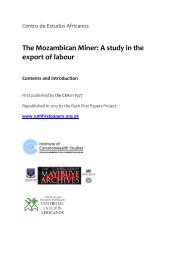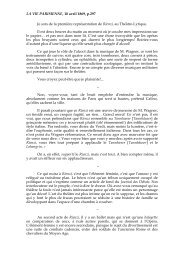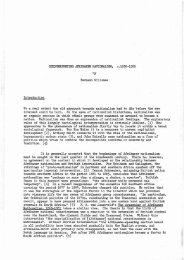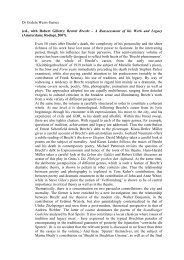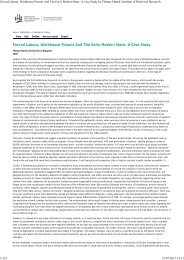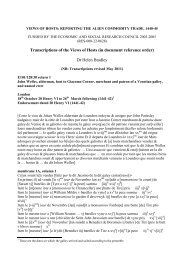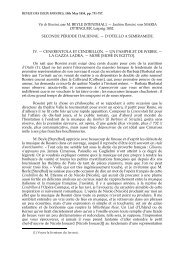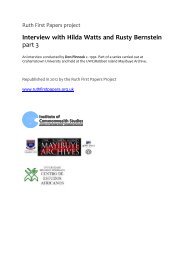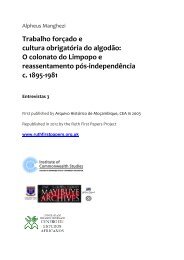Roraima: Brazil's northernmost frontier by John Hemming - SAS-Space
Roraima: Brazil's northernmost frontier by John Hemming - SAS-Space
Roraima: Brazil's northernmost frontier by John Hemming - SAS-Space
Create successful ePaper yourself
Turn your PDF publications into a flip-book with our unique Google optimized e-Paper software.
had agreed to settle under the impression that they would receive a continuous<br />
supply of the knives, axes, clothing and other manufactured goods that<br />
they greatly coveted, and that had been used to lure them into the villages.<br />
But the supply of free goods soon ended and the colonial directors started to<br />
demand labour from the men and women under their control. Indians<br />
refused to work, the fort's commander arrested their chiefs, and the inhabitants<br />
of all but one of the six villages 'rebelled', killing some Portuguese soldiers<br />
and burning their huts.<br />
The Portuguese authorities decided on a lenient response and in 1784 a<br />
royal pardon was issued to the 'rebels'. During the ensuing years 1,051<br />
Indians were persuaded to enter a new set of villages, which were now<br />
located farther down the Rio Branco so that they could be more easily controlled<br />
from the south. This second attempt to colonise <strong>Roraima</strong>'s Indians<br />
was, however, no more successful than the first. The villages were struck <strong>by</strong><br />
disease and their manioc plantations were blighted. The Indians resented<br />
fresh attempts to force them to labour for the colonial administration and in<br />
1790 there was a second rebellion. This time the authorities reacted harshly.<br />
The people from five villages were rounded up and banished to new locations<br />
on the Amazon, Madeira and Solimoes rivers thousand of kilometres<br />
from their homelands.<br />
In 1798 there was a third and final rebellion. The few remaining Indians in<br />
the Rio Branco villages tried to organise a resistance but were slaughtered <strong>by</strong><br />
a military contingent on a sandbank of the Rio Branco that became known<br />
as the Praia do Sangue (Beach of Blood). 1 This was the end of native settlements,<br />
apart from a brief attempt in 1839-46 when a missionary, Friar Jose<br />
dos Santos Inocentes, tried to settle Makuxi and Wapixana in a mission called<br />
Porto Alegre on theTacutu and then on the Uraricoera.<br />
Cattle ranching<br />
When the first Portuguese slavers and explorers saw the great natural savannas<br />
that stretch from the upper Branco to the Essequibo, they immediately<br />
appreciated their potential as pasture for cattle. In 1787 Colonel Manoel da<br />
Gama Lobo dAlmada, a future governor of the Captaincy of Rio Negro,<br />
praised the region: Those fertile plains are covered in excellent pastures for<br />
cattle, studded with clumps of bush that would afford shade for the animals<br />
during the fiercest heat, irrigated <strong>by</strong> creeks which render them fertile, and<br />
with innumerable lakes from which is drawn a quantity of mountain salt.' 2<br />
The energetic Gama Lobo d'Almada put his vision into reality. In the 1790s<br />
he shipped a few cows and bulls up the Branco to the savannas at its headwaters.<br />
In 1793 a commander of Fort Sao Joaquim, Nicolau de Sa Sarmento,<br />
founded a ranch for himself on the triangle of land between the Tacutu and<br />
Uraricoera rivers opposite the fort. A rich settler from the Rio Negro, Jose



